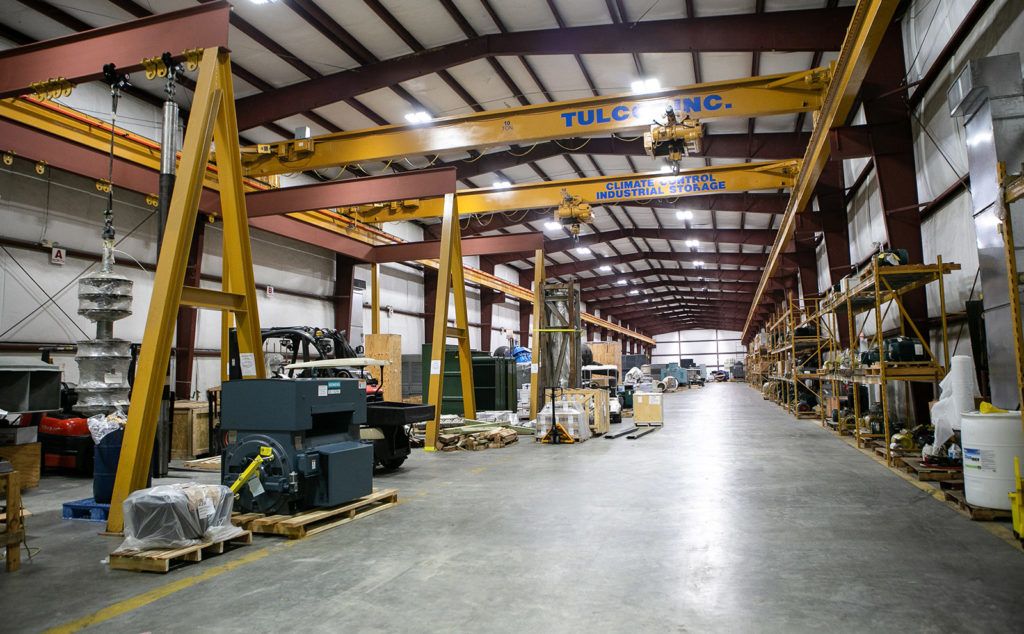Crane lift capacity is essential in ensuring the safe handling of heavy industrial equipment. The right crane capacity minimizes accidents, prevents equipment damage, and protects personnel. By understanding how lift capacity works, industries can create safer environments for workers and reduce the risks associated with heavy lifting. Tulco Industrial Storage specializes in supporting safe storage and handling practices, helping businesses keep their equipment in top condition.
Understanding Crane Lift Capacity
Crane lift capacity refers to the maximum weight a crane can safely lift. It’s crucial to understand the difference between the maximum load and the safe working load (SWL). The maximum load is the highest weight a crane can technically lift, while the SWL provides a safety margin, ensuring the crane isn’t pushed to its limits. Knowing these figures is essential in industrial settings to avoid overloading and ensure safety during lifting operations.
The Importance of Accurate Lift Capacity Calculations
Precise lift capacity calculations are vital to prevent equipment failures and accidents. When lift capacity is miscalculated, it can lead to costly downtime, repair expenses, or worse, accidents. Additionally, accurate lift calculations help ensure compliance with industry regulations such as OSHA and ANSI standards. This not only ensures safety but also avoids fines and penalties for non-compliance.
Factors Affecting Crane Lift Capacity
Several factors affect a crane’s lift capacity, including mechanical and structural elements. The crane’s condition and maintenance history play a significant role in its performance. Environmental factors like wind and rain can reduce lift capacity, so it’s important to consider weather conditions before operating. The expertise of the crane operator and proper load configuration are also crucial for maintaining safe lifting practices.
Best Practices for Safe Handling of Heavy Industrial Equipment
Routine inspections and maintenance are critical for ensuring that a crane remains in good working condition. Scheduled checks help detect issues before they lead to failures. Operator training is also essential to avoid human error and ensure safe operation. Utilizing modern technology, such as load monitoring systems, can provide real-time insights into crane performance and prevent overloading. Lastly, always follow manufacturer guidelines for safety and technical specifications.
The Role of Industrial Storage in Enhancing Safety
Proper storage solutions significantly contribute to the safety of heavy industrial equipment. When equipment is stored in organized and secure environments, it is protected from environmental hazards, reducing wear and tear. Tulco Industrial Storage offers tailored storage solutions to ensure that equipment stays in optimal condition and is ready for safe operation when needed.
Regulatory Standards and Industry Best Practices
Adhering to industry standards and regulations is crucial for maintaining a safe work environment. Relevant safety standards, such as those from OSHA and ANSI, govern crane operations to ensure safe practices are followed. Regular safety audits help ensure compliance with these standards, identifying potential risks before they lead to incidents.
Real-World Applications and Case Studies
In many industrial settings, proper lift capacity management has prevented accidents and costly damage. For example, in a case where lift capacity was accurately calculated, a company avoided a crane failure and costly downtime. However, in other cases, miscalculations led to structural damage and safety hazards. These examples highlight the importance of precise lift capacity management in preventing accidents and ensuring smooth operations.
Before diving into our frequently asked questions, discover how our specialized storage and capacity solutions enhance safe industrial handling by visiting our Capacities page.
Frequently Asked Questions (FAQs)
- What is crane lift capacity? Crane lift capacity refers to the maximum weight a crane can safely lift under specific conditions without risking failure or accidents.
- Why is knowing the crane lift capacity important for industrial operations? Accurate knowledge of a crane’s lift capacity ensures safe handling of heavy equipment, prevents overloads, minimizes accidents, and helps maintain regulatory compliance.
- How is the safe working load different from the maximum load capacity? The safe working load is a conservative value set below the maximum load capacity to provide a safety margin during operations.
- What factors can affect a crane’s lift capacity? Key factors include the condition of the equipment, maintenance history, environmental conditions, load configuration, and operator proficiency.
- How often should crane lift capacity be inspected or tested? Regular inspections and load tests should be scheduled as per manufacturer recommendations and industry standards, typically on an annual basis or after significant usage events.
- Which regulatory standards govern crane operations? Crane operations are often governed by standards from organizations such as OSHA and ANSI, ensuring safe practices in industrial environments.
- How does proper industrial storage enhance equipment safety? Proper storage, as provided by solutions like those from Tulco Industrial Storage, protects equipment from environmental hazards, reduces wear and tear, and ensures that heavy equipment remains in optimal condition.
- What role does operator training play in managing crane lift capacity? Well-trained operators are essential for correctly assessing load requirements, using the crane within its safe capacity, and implementing best practices to avoid accidents.
- Can Tulco Industrial Storage assist with managing heavy equipment safety? Yes, Tulco Industrial Storage offers specialized storage solutions designed to enhance the safety and longevity of heavy industrial equipment by maintaining optimal conditions.
- What are the risks of exceeding a crane’s lift capacity? Exceeding the rated lift capacity can lead to structural failures, costly equipment damage, and serious safety hazards for personnel involved in the operation.



